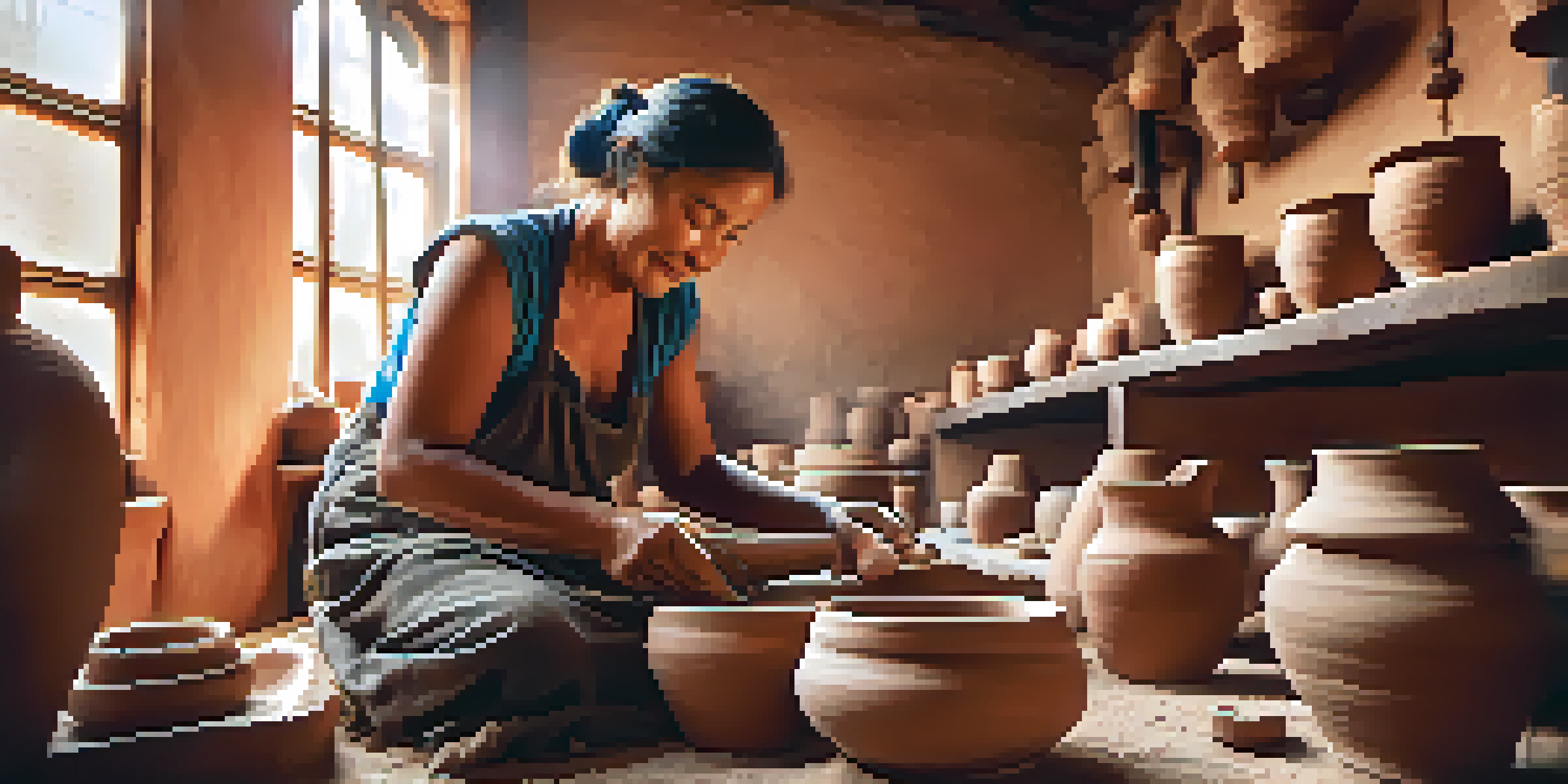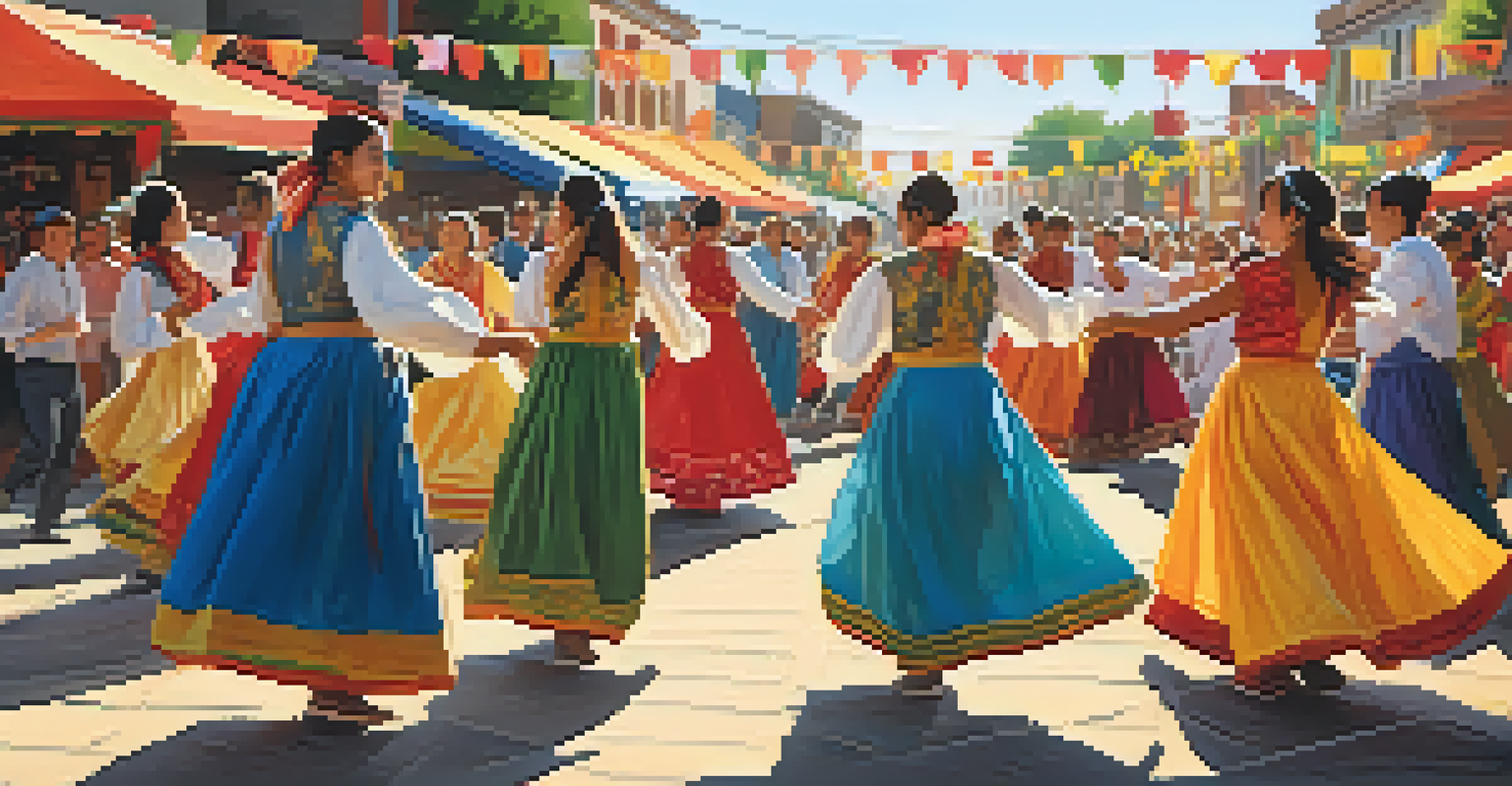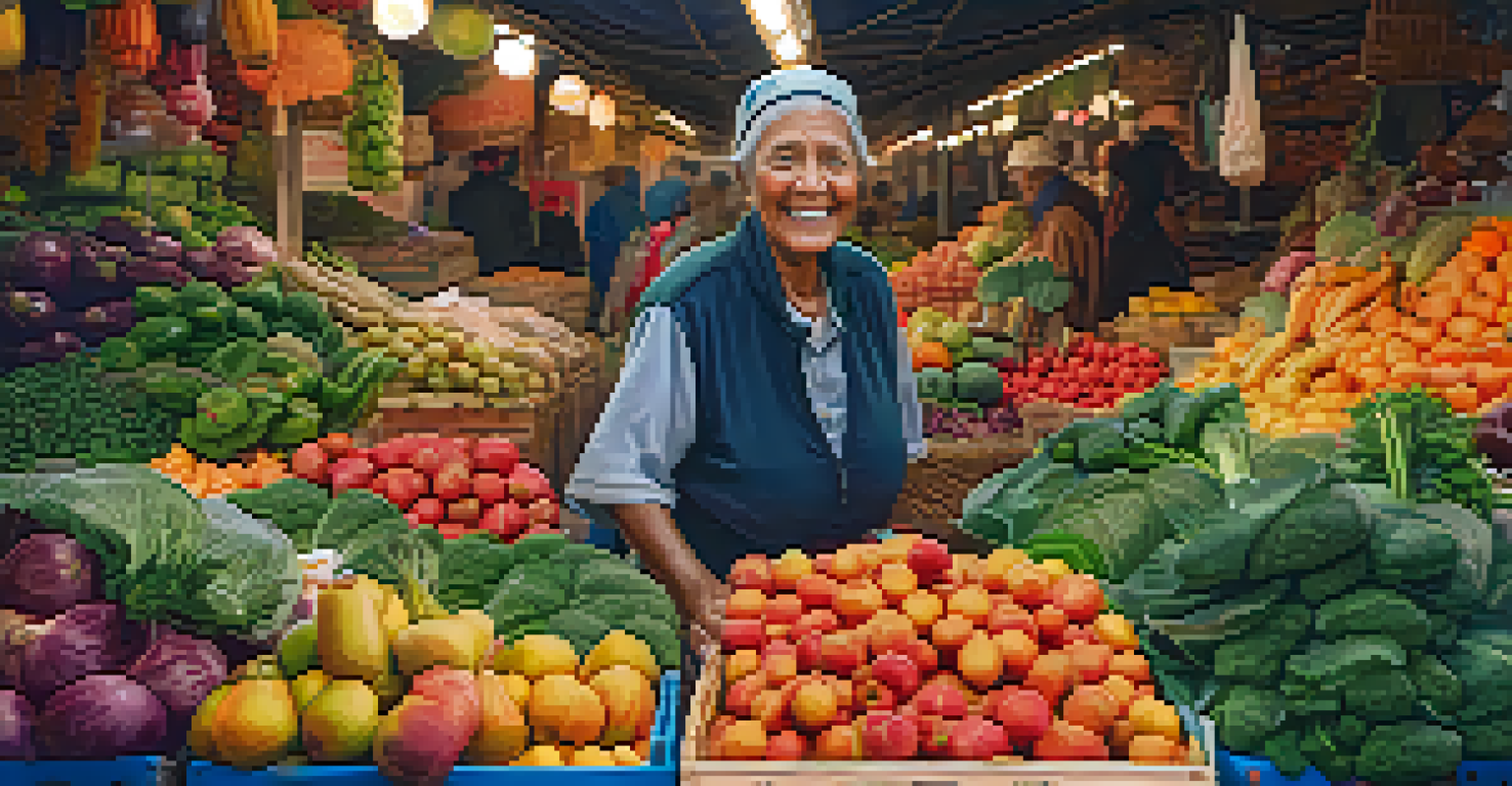Capturing Authenticity: Ethical Approaches to Travel Photography

Understanding Authenticity in Travel Photography
Authenticity in travel photography goes beyond just snapping pretty pictures; it’s about capturing the essence of a place and its people. When you think of authenticity, you might picture candid moments, local traditions, and the raw beauty of a destination. This approach helps tell a story that resonates more deeply with viewers, giving them a window into experiences that are often overlooked.
The camera is an instrument that teaches people how to see without a camera.
However, it’s essential to recognize that authenticity doesn’t mean intrusiveness. Respecting the culture and privacy of individuals is paramount. For instance, instead of photographing a local person without their consent, you might ask if you can take their picture or, better yet, engage them in conversation first. This not only fosters trust but can also enrich your experience and the story you want to tell.
Ultimately, authentic travel photography should celebrate diversity and showcase the beauty of human connection. By prioritizing respectful interactions, photographers can create images that reflect genuine moments rather than mere snapshots, allowing viewers to connect with the heart of a destination.
The Importance of Cultural Sensitivity
Cultural sensitivity is crucial in travel photography. It’s about understanding and appreciating the traditions and values of the local communities you’re visiting. Imagine traveling to a serene village and capturing its daily life; doing so with respect can lead to richer, more meaningful photos that tell a story rather than exploit a culture.

For example, participating in local festivals or rituals can provide you with unique photographic opportunities that are both respectful and engaging. This not only allows you to document the experience authentically but also shows the community that you value their culture. When you immerse yourself in their world, your photographs will likely reflect a deeper understanding of their way of life.
Build Trust for Genuine Moments
Engaging with your subjects fosters trust, leading to more authentic expressions and deeper narratives in your images.
In essence, being culturally sensitive can transform your photography from a mere documentation of sights into a true representation of the people and places that inspire you. It fosters relationships and creates a narrative that resonates with viewers on a personal level.
Building Trust with Your Subjects
Building trust is vital when photographing people, especially in foreign environments. Trust can lead to more authentic expressions and interactions, which can dramatically enhance your images. Instead of just being an observer, take the time to engage with the people you want to photograph; this will often lead to more genuine moments that you can capture.
To photograph is to hold one’s breath, when all faculties converge to capture fleeting reality.
For instance, consider a street vendor in a bustling market. By striking up a conversation before asking to take their photo, you not only create a rapport but also gain insight into their story and craft. This information can help you frame your shot in a way that reflects their personality and life, making the image meaningful.
Ultimately, trust is the foundation of capturing authenticity. When subjects feel comfortable and respected, your photographs will reflect their true selves, leading to a more intimate and honest portrayal of their lives.
Ethical Considerations in Travel Photography
Ethics in travel photography is often an overlooked aspect of the craft. It’s essential to consider the implications of your work on the communities you photograph. For example, are you reinforcing stereotypes or misrepresenting cultures? By being mindful of these questions, you can approach your photography with a sense of responsibility.
Moreover, always think about how your photos will be used. Sharing images on social media or in publications can have significant impacts on communities, sometimes leading to unwanted attention or even commercialization. Transparency regarding where and how you'll use the images can help maintain ethical standards and respect for the subjects involved.
Cultural Sensitivity is Key
Understanding and appreciating local traditions can transform your photography into meaningful storytelling.
Ultimately, ethical photography is about more than just following rules; it’s about creating a positive impact through your work. By considering the broader implications of your photography, you ensure that your images contribute to a respectful and authentic representation of the world.
Choosing the Right Moments to Capture
Choosing the right moments is essential for conveying authenticity in travel photography. Instead of staging moments, look for those spontaneous interactions that reveal the heart of a culture. For instance, capturing a child’s laughter during a local festival often tells a richer story than a posed family portrait.
Pay close attention to the rhythm of life around you. Sitting quietly in a café or a public square can allow you to observe and capture genuine moments that unfold naturally. This patience can lead to stunning images that resonate with authenticity, highlighting everyday life and interactions within the community.
Remember, the most powerful photographs often emerge from candid moments. Embrace the unpredictability of travel, and let the environment guide your lens to capture the essence of the experiences you encounter.
Using Photography to Foster Connections
Photography has the power to create connections between cultures. By sharing images that highlight the beauty and uniqueness of different communities, photographers can foster empathy and understanding among viewers. This, in turn, encourages travelers to approach new places with an open mind and heart.
For instance, when you share a photo of a local artisan at work, you’re not just showcasing their skill but also inviting others to appreciate their craft and culture. This can inspire meaningful conversations and even encourage others to engage with that community in a respectful way. In doing so, your photography becomes a bridge between cultures.
Embrace Authentic Travel Photography
Capture the essence of a place and its people through candid moments and respectful interactions.
Ultimately, fostering connections through your lens can lead to a more enriched travel experience for everyone involved. It encourages a shared appreciation for the diversity of human experiences and can help combat stereotypes by showcasing the depth and richness of various cultures.
The Role of Storytelling in Travel Photography
Storytelling is at the heart of effective travel photography. Each photograph can tell a story, conveying emotions, traditions, and experiences that resonate with viewers. By focusing on narrative, photographers can create a more immersive experience that draws people in and encourages them to engage with the content.
For example, instead of just photographing a landmark, consider capturing the people who interact with it. A photo of local families enjoying a day out at a famous site can provide context and depth, illustrating how that place fits into their lives. This narrative approach not only enriches the photograph but also invites viewers to explore the story behind the image.

In conclusion, integrating storytelling into your photography allows you to create a deeper connection with your audience. It transforms your images from simple visuals into compelling stories that celebrate the richness of human experiences.
Conclusion: A Call for Responsible Travel Photography
As we wrap up our exploration of ethical approaches to travel photography, it’s crucial to remember the responsibility that comes with wielding a camera. Each photo has the potential to influence perceptions and tell stories, so it’s essential to approach your craft with care and respect. By focusing on authenticity, cultural sensitivity, and ethical considerations, you can create images that honor the places and people you encounter.
Moreover, responsible travel photography can inspire others to adopt similar practices. By sharing your experiences and insights, you contribute to a growing community of photographers who prioritize ethical storytelling. This collective effort can lead to a positive change in how travel photography is perceived and practiced.
Ultimately, let your passion for photography be a force for good. By capturing authentic moments and fostering connections, you can create a richer understanding of the world, one photograph at a time.